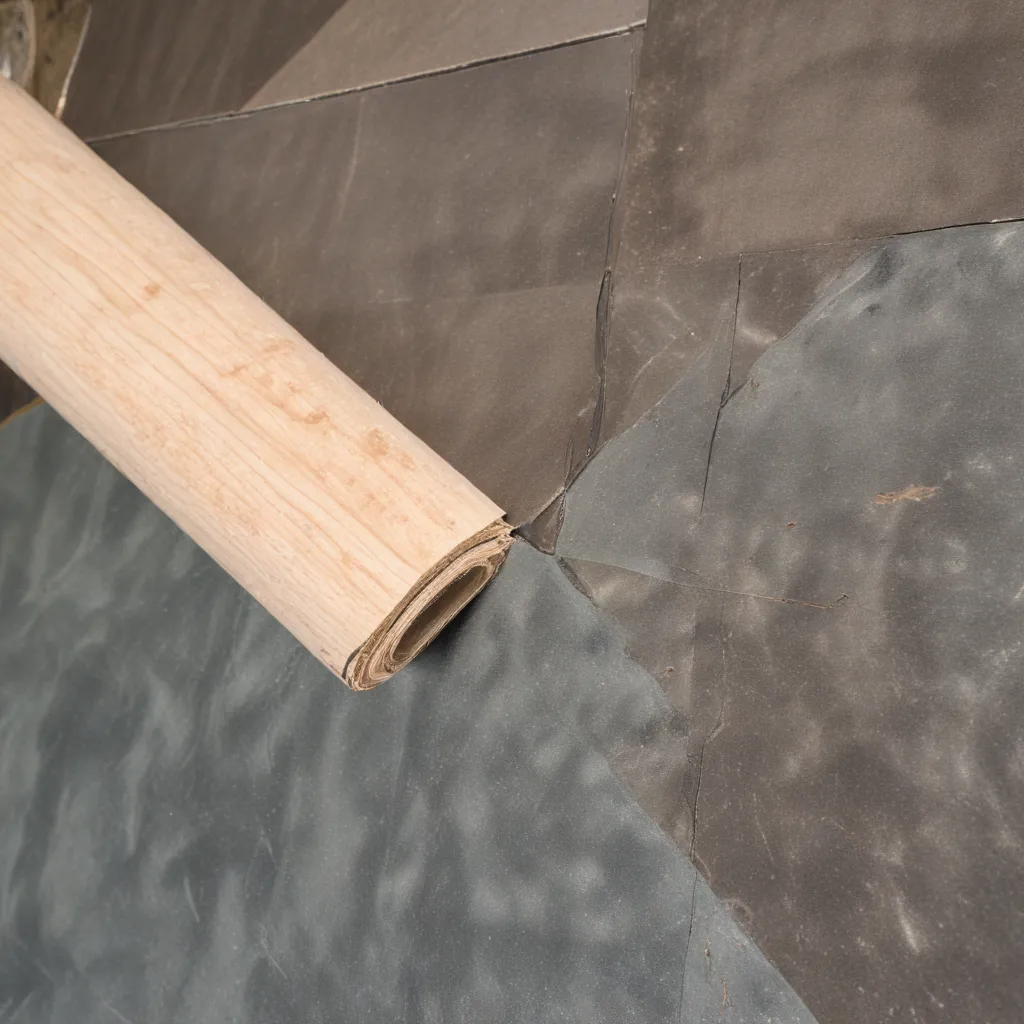
When it comes to protecting your home from the elements, the roof plays a crucial role. While the shingles or tiles on the surface may catch the eye, the often-overlooked underlayment is the unsung hero that safeguards your home from water intrusion, temperature fluctuations, and sound transmission. As an experienced roofing specialist, I’m here to guide you through the process of choosing the right underlayment to ensure your roof is weatherproofed and performing at its best.
Understanding Underlayment Types
Underlayment is a thin, durable material installed between the roof deck and the visible roofing system, such as asphalt shingles or metal panels. This critical component serves as a secondary barrier, providing an additional layer of protection against the elements. There are several types of underlayment to consider, each with its own unique characteristics and benefits.
Foam Underlayment
Foam underlayment is renowned for its superior soundproofing properties. Crafted from high-density closed-cell foam, this material excels at absorbing impact noise and reducing sound transmission between floors. Its thermal insulation capabilities also help to regulate temperature in the attic space, contributing to energy efficiency. While foam underlayment may not offer the same level of structural support as other options, its moisture resistance and ease of installation make it a popular choice for many homeowners.
Cork Underlayment
Cork underlayment is an eco-friendly and versatile option that boasts impressive performance. This natural material is inherently resistant to mold, mildew, and pests, ensuring long-lasting protection for your roof. Cork’s superior thermal and acoustic insulation properties help to maintain a comfortable indoor environment, while its cushioning effect provides a smooth, uniform surface for your roofing system. However, cork underlayment tends to be more expensive than some of its counterparts.
Felt Underlayment
Felt underlayment, also known as asphalt-saturated felt or tar paper, is a time-tested and affordable choice. This heavyweight material provides a solid foundation for your roofing, offering a good balance of moisture resistance and thermal insulation. Felt underlayment is relatively easy to install and is widely available from most roofing supply retailers. While it may not boast the same level of durability as synthetic options, felt underlayment remains a popular and cost-effective solution for many homeowners.
Factors in Underlayment Selection
When choosing the right underlayment for your roofing project, there are several key factors to consider:
Flooring Material Compatibility
It’s crucial to select an underlayment that is specifically designed for use with your chosen roofing material. Asphalt shingles, for example, may require a different underlayment than metal roofing or tile. Consult with your roofing contractor or manufacturer to ensure compatibility and optimal performance.
Subfloor Conditions
The condition and composition of your roof’s subfloor can also influence the type of underlayment you’ll need. For concrete subfloors, you may want to opt for a moisture-resistant underlayment, such as a self-adhering or synthetic option. Plywood or OSB subfloors, on the other hand, may be better suited for a more affordable felt underlayment.
Moisture Resistance
Protecting your roof from water intrusion is a primary function of the underlayment. Synthetic underlayments generally offer superior moisture resistance, while felt underlayments can be more prone to absorbing and retaining water. In areas with high humidity or heavy rainfall, a moisture-barrier underlayment may be the best choice.
Underlayment Benefits for Weatherproofing
Selecting the right underlayment can provide a host of benefits when it comes to weatherproofing your roof:
Thermal Insulation
Underlayment plays a crucial role in regulating the temperature in your attic space. Cork and foam underlayments, in particular, excel at providing superior thermal insulation, helping to prevent heat buildup and reduce energy costs associated with cooling your home.
Sound Absorption
For homeowners concerned about noise transmission from rainfall, hail, or foot traffic, underlayment can make a significant difference. Foam and cork underlayments are renowned for their sound-absorbing properties, creating a more peaceful living environment.
Vapor Barrier Properties
Some underlayment options, such as self-adhering or synthetic varieties, incorporate vapor barrier features. These help to prevent moisture from seeping through the roof deck and compromising the structural integrity of your home.
Installation Considerations
Proper underlayment installation is essential to ensure its effectiveness and longevity. Here are some key factors to keep in mind:
Subfloor Preparation
Before laying the underlayment, it’s crucial to thoroughly clean and prepare the roof deck. This involves removing any debris, dust, or adhesive remnants that could interfere with the underlayment’s adhesion.
Sealing Edges and Seams
For underlayments with moisture barrier properties, ensuring a tight seal at the edges and seams is critical. Overlapping the underlayment by at least 6 inches and using the recommended sealants or tapes will help prevent water intrusion.
Ensuring Proper Thickness
The thickness of the underlayment can impact its performance and compatibility with your roofing system. Refer to the manufacturer’s guidelines to determine the appropriate thickness for your project, as exceeding the recommended specifications could lead to instability or voiding of the warranty.
By carefully considering the type of underlayment, the subfloor conditions, and the installation best practices, you can ensure that your roof is well-protected from the elements and performing at its best. Investing in the right underlayment is a crucial step in safeguarding your home and maximizing the lifespan of your roofing system.
For more information on genuine roof systems and expert advice on your next roofing project, visit Genuine Roof Systems. Our team of experienced professionals is here to help you make informed decisions and ensure your home is weatherproofed to the highest standards.

























